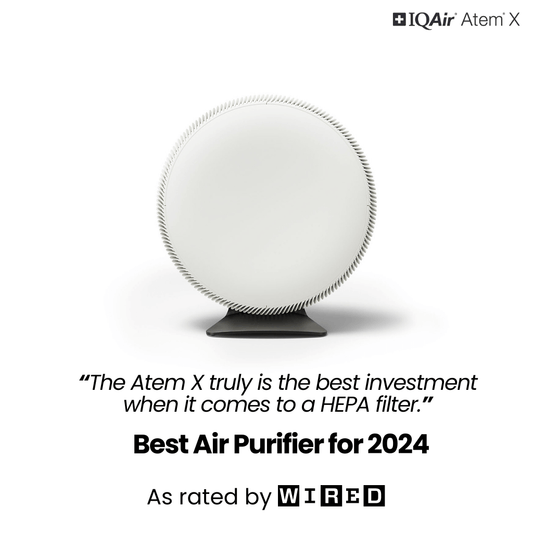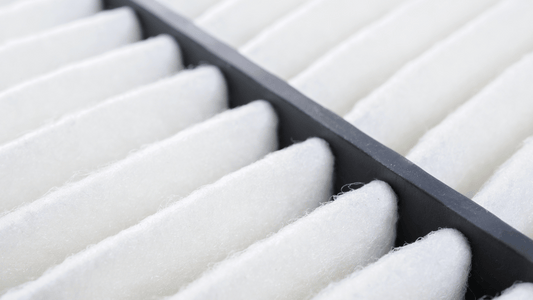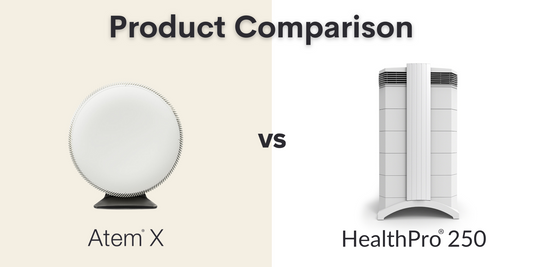Did you ever ask yourself if anti allergen bedding works? House dust mite allergen is a potent trigger of asthma and allergic rhinitis, causing symptoms like wheezing, coughing, sore eyes, and sneezing. The culprit is not the mite itself, but proteins found in its droppings. The main allergens are the proteins known as Der f1 and Der p1. The key to managing the allergic disease is allergen avoidance. If you are not exposed – or are exposed less often - then you can become less dependent upon medication.
But what is the best way to reduce the burden of house dust mite allergen in your home? The following measures are most often recommended:
- The use of mite allergen-impermeable mattress covers
- Installing an allergy air purifier in the bedroom with enough power to clean the room at least twice an hour
- Intensive and regular damp dusting
- Using fragrance-free and allergy friendly cleaning products
- Vacuuming with an allergy vacuum cleaner fitted with a High-Efficiency Particulate Air (HEPA) filter
- Improving ventilation and keeping humidity low
But which method of allergen avoidance is the most effective – and should you do just one thing or several things at the same time? Two new scientific papers in the journal Allergy may help point you in the right direction.
Researchers at Utrecht University have used participants in the Prevention and Incidence of Asthma and Mite Allergy (PIAMA) study to look at the effect of mite allergen-impermeable mattress covers (or anti-allergen bedding as they are often called) on levels of house dust mite allergen and the development of sensitization and allergic symptoms during the first eight years of life, with annual follow up. Nearly 900 pregnant women, already known to be allergic, received either anti-allergen bedding that consisted out of mite allergen-impermeable polyester-cotton mattress and pillow covers or ordinary equivalent cotton bedding. The anti-allergen bedding and the regular bedding were used to cover the parents’ and the baby’s bed. They weren’t told what kind of bed cover they had until after the study was over.
The parents gave information about any allergic symptoms in their child every year until they were eight years old. The researchers also took dust samples to analyse for Der f1 and Der p1 when the children were three months old and a second lot of samples when they reached the age of eight.
There was a temporary decrease in asthma symptoms at the age of two years among those who used the anti-allergen bedding and lower levels of Der f1 (but not Der p1). Overall, however, the anti-allergen bedding alone did not have any protective effect. In fact, those using the anti-allergen bedding were even more likely to develop eczema than those using pure cotton. The researchers were surprised to find this and they believe the increased risk of eczema might be because children sweat more when using regular anti-allergen bedding.
This study’s findings are different from others, which have found that anti-allergen bedding is protective against asthma and allergy. The researchers point out that the difference is that allergy-friendly bed covers were only one element in an allergy avoidance campaign in these other studies. Other common measures were also used. So the take-home message is that the key to effective allergen avoidance is taking a multi-pronged approach.
Meanwhile, a review of the scientific evidence on house dust mite avoidance in perennial allergic rhinitis found only nine clinical trials covering 500 participants (the one study from The Netherlands mentioned above involved nearly twice that number). These looked at anti-allergen bedding, chemicals that kill mites (acaricides), HEPA air filters, and a combination of these approaches.
All studies agreed with the Dutch study that anti-allergen bedding alone is not enough for effective allergen avoidance.
To find the best products visit our shop for the best Dust Mite Relief Products.




